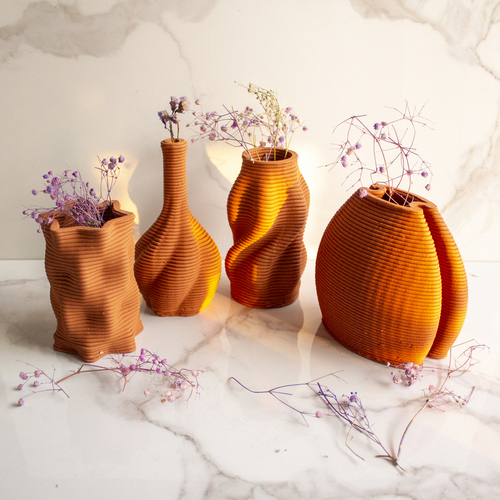TERRACOTTA

For Terracotta Kitchenware and Serveware –
- Although some claim it can go in the dishwasher, hand washing is advised. Strong detergents and high temperatures can harm and remove the seasoning on terra ware.
- After removing the terra-ware from the oven/microwave, let it cool completely before soaking it in warm water to help remove any food remnants. Use hot water without any detergent and a soft abrasive pad and clean gently.
- For thorough cleaning, you can soak your terra-ware overnight in water and baking soda; for a liter of water, put 3 teaspoons of baking soda. Clean it with a non-metallic pad; do not use any form of chemical powder as it will clog the pores and render the terra-ware ineffective. After a warm rinse, let your terra-ware air dry completely.
For Terracotta Homeware –
- You can always clean your vases with a dry cloth or a damp one, as per the need required.
- For intensive cleaning, you can soak your terra vases in water, rub them gently with a non-metallic pad, and let them air dry completely.
- For any stains or spots, repeat the second step with a mixture of water and baking soda and let it air dry. (Make a thick paste of water and baking soda)
Material - Technique - Crafter

For thousands of years, earthenware has been fired in ovens by potters. It was employed as amphorae during the height of the Roman Empire to ship wine and olive oil to the furthest reaches of their domain.
It only requires firing temperatures of 1,200° F or below, unlike stoneware and porcelain. Some earthenware potters glaze their creations to make them watertight.
Earthenware bricks are still the most common type of building material used today, along with terracotta planters and other household items. Its widespread use is mostly due to the fact that earthenware clay is more forgiving and usually simpler for potters to deal with.

